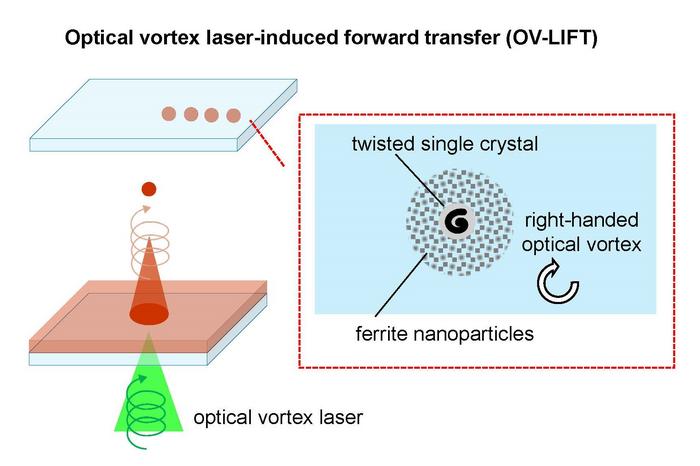The proliferation of all things digital doesn’t mean that printing technology is no longer relevant. In fact, printing technology is required to make the semiconductors necessary for the digital world. And as an Osaka Metropolitan University-led team has shown using a new printing technique, printable magnetic devices for high-density data storage might soon be realized.

Credit: Osaka Metropolitan University
The proliferation of all things digital doesn’t mean that printing technology is no longer relevant. In fact, printing technology is required to make the semiconductors necessary for the digital world. And as an Osaka Metropolitan University-led team has shown using a new printing technique, printable magnetic devices for high-density data storage might soon be realized.
Dr. Ken-ichi Yuyama, a lecturer at the Graduate School of Science, and his colleagues report in APL Materials on the development of a new type of laser-induced forward transfer (LIFT) for laser printing using an optical vortex, which has been dubbed OV-LIFT.
The team shined a laser beam on a spatial light modulator and through a quarter-wave plate to convert the beam into a circularly polarized optical vortex. This beam was then focused onto a plate with magnetic ferrite nanoparticles that were shown to successfully be printed on a surface at high precision. The resulting printed crystals also have helix-like twisted structures, the direction of which could be controlled by changing the optical vortex’s helicity to the opposite rotation.
“The results of this research have the potential to be used not only for fine particle patterning but also for single crystal synthesis, which can be expected to lead to the development of new materials,” declared Dr. Yuyama. “We plan to apply this technology to various types of fine particles, as well as to shine a light on the formation mechanism and function of twisted crystals.”
###
About OMU
Established in Osaka as one of the largest public universities in Japan, Osaka Metropolitan University is committed to shaping the future of society through “Convergence of Knowledge” and the promotion of world-class research. For more research news, visit https://www.omu.ac.jp/en/ and follow us on social media: X, Facebook, Instagram, LinkedIn.
Journal
APL Materials
DOI
10.1063/5.0209114
Method of Research
Experimental study
Subject of Research
Not applicable
Article Title
Using optical vortex laser induced forward transfer to fabricate a twisted ferrite microcrystal array
Article Publication Date
17-Jun-2024
COI Statement
The authors have no conflicts to disclose.




